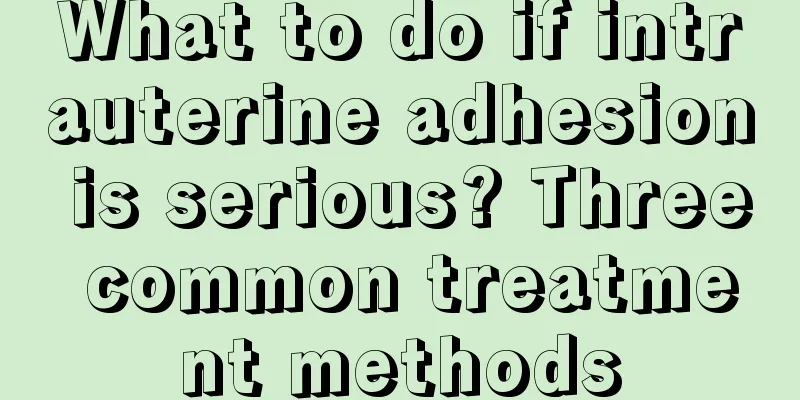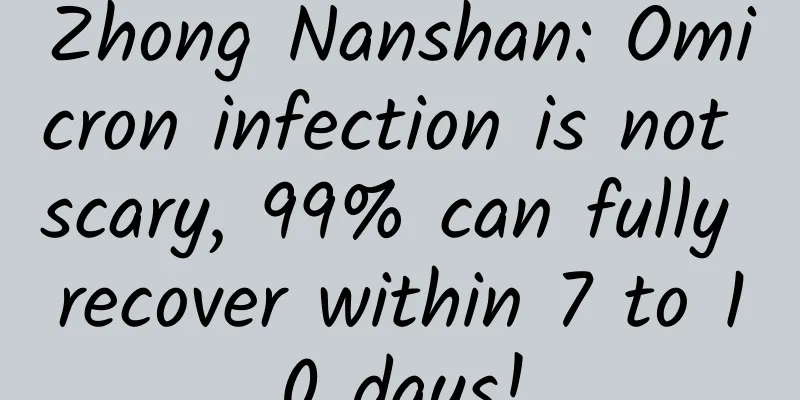What to do if intrauterine adhesion is serious? Three common treatment methods

|
Women with intrauterine adhesions will experience lower abdominal pain, which may be more severe at night and may even affect walking and defecation. They may also experience menstrual irregularities, amenorrhea, and oligomenorrhea. They are more likely to experience pregnancy failure, premature birth, and stillbirth. Surgery or hysteroscopy can be used to treat the condition. 1. Drug treatment, using Chinese medicine intraperitoneal perfusion therapy, targeting the characteristics of intrauterine adhesions, using high-tech, applying the traditional Chinese medicine dialectical treatment, and combining with unique Chinese medicine prescriptions to promote the absorption and disappearance of inflammation. For example, Yang's Qulian prescription is made up of natural medicinal materials such as myrrh, aconite, motherwort, and chuanxiong. 2. Surgical treatment, using hysteroscopic technology. The application of hysteroscopy in clinical practice can solve some difficult gynecological diseases intuitively, simply and safely. Hysteroscopic treatment of intrauterine adhesions can not only determine the degree and type of adhesions, but also determine the toughness of adhesions. 3. Physical therapy: relieve patients' mental concerns, enhance their confidence in treatment, increase nutrition, exercise, pay attention to the combination of work and rest, and improve the body's resistance. 4. Hysteroscopic therapy: The application of hysteroscopy in clinical practice can solve some difficult gynecological diseases intuitively, simply and safely. It can not only determine the degree and type of adhesion, but also the toughness of the adhesion. Membranous adhesions and fibromuscular adhesions can be separated under hysteroscopy or removed with surgical scissors; while dense connective tissue-like adhesions require electroresection under B-ultrasound monitoring, and an intrauterine contraceptive device is placed after the operation to prevent re-adhesion, and continuous estrogen and progesterone are given to promote endometrial growth. It helps patients to resume menstruation and some of them can become pregnant again. |
<<: There are polyps at the cervix, and cervical polyps need treatment
>>: What to do if prolactin is high? Treatment of the cause is the key
Recommend
What should I do if I walk too much after medical abortion?
Everyone knows that after a woman has a medical a...
How to detect pregnancy with test paper
Many women know about early pregnancy test strips...
Does ovulation mean you are not pregnant?
Some women don’t know they are pregnant at first,...
A small amount of bleeding after intercourse
Inserting an IUD is a relatively reliable method ...
What to do if you have a spontaneous abortion and are pregnant for one month
Today's society is becoming more and more ope...
What is the childbirth breathing method?
In life, when a pregnant woman is about to give b...
Female infertility examination must do items
In clinical medicine, women who suffer from infer...
How long does it take for abdominal distension to disappear after transplantation?
IVF has been used clinically for many years. It i...
What fruits can girls eat during their period?
Fresh fruit is undoubtedly a good thing that is b...
Why does a woman have a strange smell in her vagina?
The health of women's private parts is partic...
How to solve the problem of coccyx protrusion after childbirth
Postpartum coccygeal herniation has become a majo...
Pregnant women's blood sugar is low one hour later
After becoming pregnant, women may need to check ...
Spring weight loss diet advocates following 3 dos and 5 don'ts
The cold of winter is gradually fading away and s...
What is the cause of a headache caused by frequent dreams? How to treat a headache caused by frequent dreams
Many friends always have headaches, and they all ...









